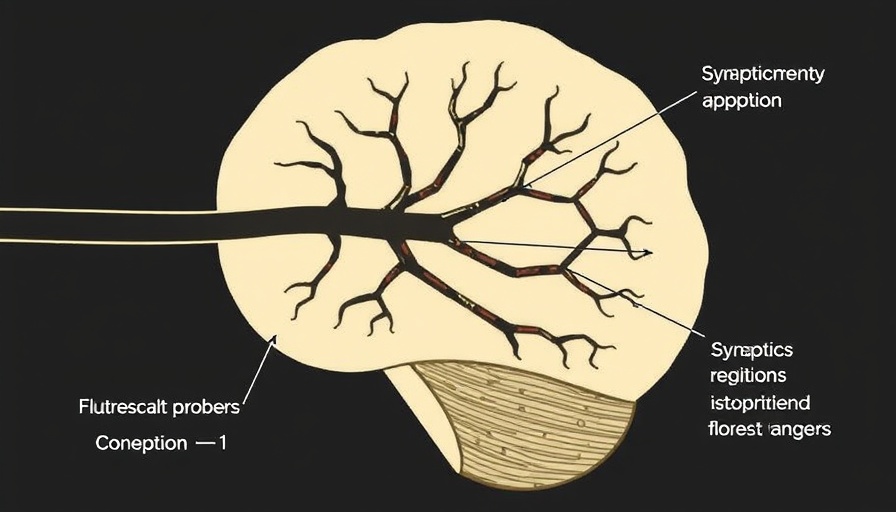
Understanding Brain Synapses: A Revolutionary Approach
Recent advancements in neuroscience have unveiled a groundbreaking method for visualizing active brain synapses using a simple technique: the application of fluorescent probes. This method, which involves merely 'sprinkling' the fluorescent material onto brain tissue, allows researchers to observe synaptic activity in real-time, providing crucial insights into brain functionality and aiding in the understanding of various neurological disorders. For concierge health practitioners, understanding this technology is imperative, as it opens new pathways for patient care and treatment strategies.
The Significance of Fluorescent Probes in Neuroscience
The ability to visualize synaptic activity plays a pivotal role in neuroscience research. The newly introduced fluorescent probes are designed to selectively bind to active synapses, emitting a fluorescent signal that can be captured using advanced imaging techniques. This approach enables scientists to track synapse dynamics in live specimens, providing a bird’s-eye view of neuronal communication in real-time. For practitioners, these findings hold the potential to transform diagnostics and treatment plans, particularly in treating conditions such as Alzheimer’s disease and other neurodegenerative disorders.
Historical Context of Brain Imaging Techniques
In exploring this novel technique, it is essential to consider the evolution of brain imaging. Traditionally, methods such as MRI and CT scans provided anatomical insights but fell short in depicting dynamic brain functions. The emergence of functional MRI (fMRI) brought a breakthrough in visualizing brain activity, yet it couldn't penetrate the microscopic level of individual synapses. The introduction of this new fluorescent technique marks a significant milestone in bridging that gap, overcoming limitations of previous imaging modalities and enhancing our comprehension of neurobiology.
Practical Implications for Patient Care
This development is particularly relevant for concierge health practitioners who prioritize cutting-edge care. By integrating knowledge of these advanced imaging techniques into their practice, they can better assess their patients' neurological health. Knowledge of synaptic activity correlates with various mental health conditions such as depression, anxiety, and cognitive decline. Understanding the signaling mechanics in the brain can guide treatment options and enable personalized care management strategies.
Future Predictions in Neurological Research
Looking forward, the application of this fluorescent probe technology is poised to revolutionize neurological research. It is predicted that as the technology matures, more sophisticated probes capable of targeting specific neurotransmitter systems will enter the field. This will not only enhance our understanding of healthy brain function but also illuminate the pathophysiology underlying numerous neurological and psychiatric disorders. The potential for translating these research findings directly into clinical practice cannot be overstated.
Addressing Common Misconceptions
Despite the promising nature of this technique, there are misconceptions surrounding its accessibility and applicability in clinical settings. Many practitioners may believe that such advanced imaging requires extensive laboratory resources or could be financially prohibitive. However, as technology progresses, these probes are expected to be commercially available, making them more accessible to a broader range of healthcare settings. For concierge practitioners, staying updated on advancements like these is crucial in maintaining a competitive edge.
Call to Action: Stay Informed
As the field of neuroscience continues to evolve, it is imperative for healthcare practitioners to stay informed about these developments. Advancements in technology such as the fluorescent probe technique can provide invaluable insights into patient care and treatment methodologies. Keep abreast of emerging research and consider how these innovations may impact your practice and enhance the care you provide to your patients.
 Add Row
Add Row  Add
Add 






Write A Comment